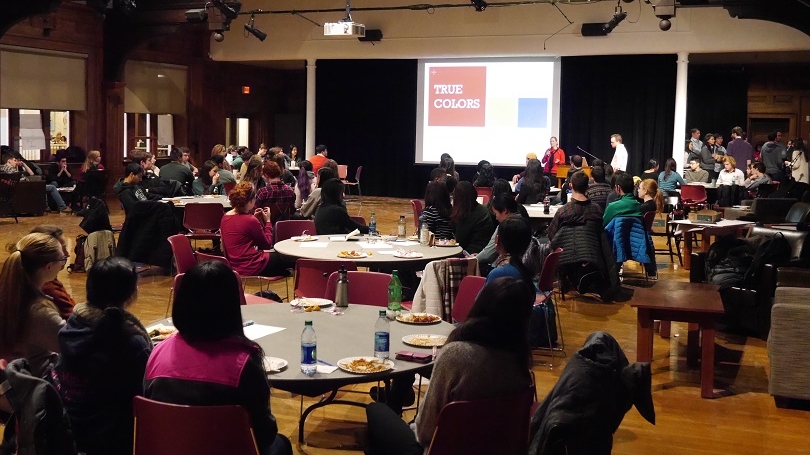
- Public Policy
- Leadership
- Funding
- News & Events
- About the Center
Back to Top Nav
Back to Top Nav
Back to Top Nav
Back to Top Nav
January 18th, 2016 marked the beginning of D-LAB, Dartmouth Leadership Attitudes and Behaviors, a six-week long program co-sponsored by the Rockefeller Center and the Collis Center for Student Involvement. David Pack and Robin Frye started the meeting by explaining how this program enables participants to reflect on individual values to increase self awareness. Another goal of the program is to identify one’s strengths and weaknesses and learn how they arise in a group setting. Student facilitator Austin Boral continued the discussion of D-LAB’s goals by introducing the concept of “breadth versus depth” and how it relates to leadership. He noted how in high school most students possess a multitude of skills, but stated the importance in transitioning to possessing a few skills in areas one is most passionate about. Over the course of the program, the first year student participants will have the opportunity to converse with their peers and upperclassmen about their experiences at Dartmouth, and discover the values most important to them.
Each of the six sessions revolve around a specific topic, with the first one addressing "Leadership From Within." The session focused on participant’s identifying their strengths and weaknesses, and learning the importance of various personalities in group setting.
During registration, participants filled out a “true colors test”, which asked participants a series of questions. Depending on their answers, participants received a color that corresponded to the column of characteristics they identified with most: blue, gold, green, or orange. At the session, participants were grouped together based on their dominant color, and were then asked as a group to describe the process of baking a cake. Other than being supplied with markers and paper, the participants received no further instructions.
Upon completion, each group presented their poster. Each group approached the task in very different ways. One group only listed three steps and drew a picture on their poster, while another gave a detailed description of how to bake a cake under various government systems.
After each color presented, David described the positive and negative traits associated with each color and how their presentation correlated to the given characteristics. Many participants realized the strong connection between the activity and the session’s overall topic, because the various personality groups produced very different results.
Participants then spent the remaining portion of the session in their assigned groups of ten to twelve fellow participants and two student facilitators, which will remain the same for the entire program. Each group comprised of an equal balance of all four colors, which provided further insight how each personality approached the cake task and allowed participants to discuss how they embodied their color’s leadership qualities.
Submitted by Rachel Inman '19, D-LAB participant